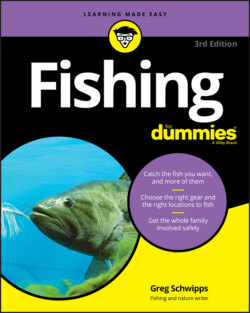Читать книгу Fishing For Dummies - Greg Schwipps - Страница 92
Largemouth bass: The most important gamefish in America
ОглавлениеLargemouth bass appear all over the country, and are pursued with feverish intensity. Bass tournaments are high-dollar affairs, with professional anglers chasing down fish from gleaming boats bristling with arsenals of gear. Many lakes, rivers, streams, and brackish coastal waters have populations of largemouth, and anglers don’t need fancy equipment to get in on the excitement of catching this hard-fighting sportfish. Largemouth bass take lures, plugs, flies, plastic worms, real worms, crayfish, and crickets. In short, they are opportunistic feeders that often strike aggressively. As shown in the color section, the jaw of the largemouth extends farther back than the eye (which is not true of the smallmouth). The largemouth is usually dark green in color with a dark band along the lateral line. The dorsal fin is divided into two distinct portions: hard spines in front and softer ones in the rear. The largemouth is sometimes known as the bucketmouth because of its large mouth, which appears even bigger when it attacks your lure, fly, or bait. Bass grow larger in warmer climates like those found in Florida or California, where 20-pound largemouths appear; in the Midwest, an 8-pound bass is a rare trophy.
